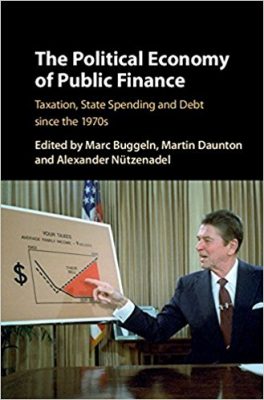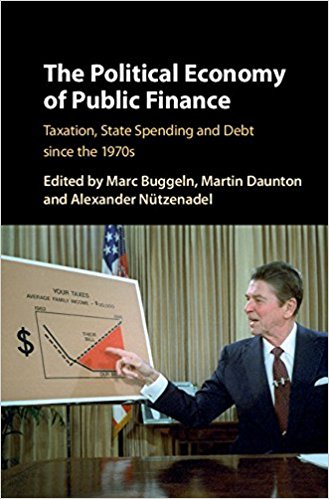 Editors: Marc Buggein, Martin Daunton, and Alexander Nutzenadel
Editors: Marc Buggein, Martin Daunton, and Alexander Nutzenadel
Publisher: Cambridge University Press – 313 pages
Book Review by: Sonu Chandiram
In October 1973, the Arab members of the Organization of Petroleum Exporting Countries (OPEC, founded in 1960 by Iran, Iraq, Kuwait, Saudi Arabia, and Venezuela) proclaimed an embargo on nations perceived as supporting Israel during the Yom Kippur War, also known as the 1973 Arab-Israeli War.
This war lasted from October 6, 1973 – when Egyptian and Syrian forces, hoping to win back territory lost during the third Arab-Israeli war in 1967, launched a coordinated attack on Israel on Yom Kippur, the holiest day in the Jewish calendar – until October 25.
The initial nations targeted in the oil embargo were Canada, Japan, the Netherlands, the United Kingdom, and the United States, which was later extended to include Portugal, Rhodesia (now known as Zimbabwe), and South Africa. The price of oil was about $3 a barrel globally at the beginning of the embargo and at its end in March 1974, the price had quadrupled to $12 a barrel.
This book about government taxation, spending, and debt buildup takes into account the influence of price fluctuations of primary commodities such as oil and other resources needed by national economies, taking a look at trends in public finance in developed capitalist countries.
Fourteen specialists in public finance including the three editors named above wrote the 12 chapters of this book, the titles of which we name below to give you an overview of its contents:
List of Figures
List of Tables
List of Contributors
Acknowledgements
- The Political Economy of Public Finance Since the 1970s: Questioning the Leviathan
- Creating a Dynamic Society: The Tax Reforms of the Thatcher Government
- Fiscal Policy in Japan and the United States since 1973: Economic Crises, Taxation, and Weak Tax Consent
- Swiss Worlds of Taxation: Political Economy of Fiscal Federalism and Tax Competition
- Taxation in the 1980s: A Five-Country Comparison of Neo-Liberalism and Path Dependency
- The Swiss Tax Haven, the Bretton Woods System Crisis and the Globalization of Offshore Finance
- Post-War Fiscal Traps
- Fiscal Redistribution in Comparative Perspective: Recent Evidence from the Luxembourg Income Study (LIS) Data Centre
- The State, Public Finance and the Changing Response to Investing in the Future: The Case of the United Kingdom since the 1970s
- From ‘Brink of the Abyss’ to ‘Miracle? Public Spending in Denmark and the Netherlands since 1980
- The Politics of Public Debt Financialization: (Re)Inventing the Market for French Sovereign Bonds and Shaping the Public Debt Problem (1996-2012)
- Structured Fiscal Imbalances, Financial Repression and Foreign Debt Sustainability in Southern Europe, 1970s-1990s
Prior to the oil shock of late 1973, there was a period of high rates of economic growth and easy finance. But the oil embargo on the United States and seven other countries put pressure on them to raise taxes. This led to tax protests and consequently, the lowering of income tax rates.
The era of easy finance had also led governments to broader and more welfare spending. The consequence of lower government revenues and higher welfare costs was deficit spending and rising debt levels.
The United States’ government debt in 1973 was $458 billion, which was nearly a third (32 percent) of its gross domestic product (GDP). About a decade later (in 1982) government debt had grown by nearly 150 percent, and had climbed to $1.142 trillion. This was then about 34 percent of the GDP of around $1.35 trillion.
Looking at numbers published by the U.S. Treasury, we see that yesterday, on September 12, 2017, U.S. government debt skyrocketed to $20.175 trillion. At the end of June 2017, GDP was $19.227 trillion (latest available figure). So debt has now surpassed 100 percent of GDP. Debt rose by $9.35 trillion or 88 percent from $10.626 trillion at the beginning of the two-term Obama presidency to $19.976 trillion at its end.
Chapter 5, Taxation in the 1980s: A Five-Country Comparison of Neo-Liberalism and Path Dependency by Mark Buggein is a good one to read to discover the actual effects of lowering income tax rates and raising government spending, and the consequential effect: the ballooning of national debt.
The chapter author points out that President Ronald Reagan “was responsible for expanding government expenditures, primarily by increasing the military budget. During his first year in office (1981) the deficit was 21/6 percent of GDP, but by 1986 it had soared to over 37 percent.”
This is a very good book to gain insight into the effects on public finance (debts and surpluses) caused by taxation and spending by governments, particularly in capitalist countries.
Editors:
Marc Buggein is Lecturer in Contemporary History at Humboldt University in Berlin, Germany.
Martin Daunton was Professor of Economic History at the University of Cambridge from 1997 to 2015, and previously Astor Professor of British History at University College London.
Alexander Nutzenadel is Professor of Economic and Social History at Humboldt University in Berlin, Germany.







